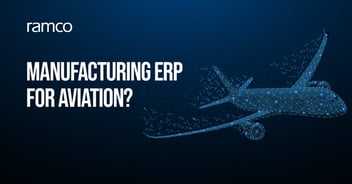
Tailors are supposed to make any wrong size fit with needles, tucks, pins and scissors. But do you walk in a wrong size with as much confidence?
IF someone forces us to define ERP in just one word, not an alphabet more – the word would surely be ‘performance’. Isn’t that their main job at the end of the day? Make a business perform, no matter what.
But performances differ too. A ballerina uses her toes, a drummer uses his hands, an actor would cruise the whole show with mere expressions and an orchestra-composer (or even Harry Potter) would need just a good wand in his hand to do what he does.
So irrespective of how outstanding a ballet dancer one is, can s/he conduct a puppet theater with as much ease and poise? The answer is easy – No! But we need to dive a little below the obvious answer here.
Project management is a crucial and unique need for most organizations – not only the ones who deal in human resource-based work but also construction firms (for material and timeline management) and even a factory floor (for better inventory, supply chain and manufacturing plans). That does not mean that just because a vanilla ERP can be used on the name of ERP, it should be applied with a blind eye.
That’s like running a difficult, high-level and richly-scripted puppet show with a blindfold! Projects need very careful maneuvering of strings so that the right character enters the stage and exits the stage at the precise time and there is no chaos. Unless an expert artist juggles these strings with a sharp skill, everything would run into chaos and no one will ever manage to follow the story to the end.
A project is much more than a rough sketch presented to the client. Umpteen factors can make it work wonders and by the same force they can ruin everything – from time schedules, cost buckets, tight resource availability, to client deadlines and even the business’s own margins.
Everything ultimately runs into a ripple effect on the revenues. Manufacturing ERPs do a great job in integrating operational and transactional facets of an organization across some functions. But Project management is a storey above this ground floor. It needs acute visibility, without which the show just runs into a crazy mayhem.
Yes, with some minor touch-up, fix-up, hammers-and-nails or repainting here and there, a manufacturing ERP would seem to run the show reasonably well enough. But look closer at the word ‘seem’.
Because when it comes down to crucial deadlines leaking, resources running into confusion, scope-creeps spilling all over, weak invoicing affecting cash flows, compliance mandates going amok, poor utilization rates adding fuel to fire and the project ship looking like a butcher’s floor; the word ‘seem’ would not be enough.
A manufacturing ERP can look sturdy but you wouldn’t want a sturdy bull in a project China-shop, would you?
Try to pull and let loose the strings as they are supposed to – under the control of right, well-trained fingers. Embrace a new level of bidding advantage, client satisfaction, rigorous time management, sharp resource control, fluid visibility, tightly-knit compliance, stronger invoicing and efficient juice of utilization, and consequentially, better revenue management and deals – with something that only a genuine project management ERP or Services Resource Planning (SRP) software can deliver.
Think about it.
If you attend a morning ballet class and are too lazy to change, of course, you can wear a Tutu to work. But the question is – Should you? Would you?
Frequently Asked Questions (FAQs)
Enterprise asset management (EAM) involves the management of mission critical assets of an organization throughout each asset's lifecycle. EAM is used to plan, optimize, execute, and track the needed maintenance activities with the associated priorities, skills, materials, tools, and information. The aim is to optimize the quality and utilization of assets throughout their lifecycle, increase productive uptime and reduce operational costs.
Enterprise asset management (EAM) involves the management of the maintenance of physical assets of an organization throughout each asset's lifecycle. EAM is used to plan, optimize, execute, and track the needed maintenance activities with the associated priorities, skills, materials, tools, and information.
The software helps in effective maintenance of assets through preventive, predictive, shutdown and breakdown maintenance strategies. The system also helps enterprises mitigate equipment risks by enhanced safety standards. The streamlined operations and improved asset performance helps organizations increase their investment effectiveness.
EAM is important because it helps organizations track, assess, manage and optimize asset quality and reliability. Asset intensive Organizations have hundreds, thousands, even millions of assets which needs to be maintained to maximize / optimize life of these assets to increase the return on investment.
The key features of effective EAM are:
- Work management.
- Maintenance Strategies (Preventive/ Predictive / Breakdown / Shutdown).
- Planning and scheduling.
- Supply chain management.
- Health and safety.
- Mobility.
- Analytics.
- Improved Asset Health at reduced cost through data driven maintenance Programs
- Complete visibilityon entire maintenance data across Equipment, across Models, across Branches to aid in analysis & decision making such as to Repair or Replace the Equipment
- Insightful analysis of Inspection Data to improve customer satisfaction
- Effective maintenance management enhanced by predictive maintenance and inbuilt analytics
- Increased reliability and safety, keeps complete track of all the inspections & calibration schedules
- Mobile Application enables users to execute work while “in the field” leading to minimized non-productive time and increased productivity and reduces duplication of work and human errors in recording information.
- Quick turnaround time through Actionable Notification & Alerts for every process in real time and accessible anytime and anywhere.
- Improved Regulatory Part of asset management involves the implementation of better O&M practices, which can significantly improve compliance.
Asset Intensive companies under the following Industries :
- Ports
- Cement and Mining
- Utilities
- Fleet Maintenance
- Equipment Rental
- Other Manufacturing
- Real Estate & Infrastructure
- Power Generation
Contact us for a meeting and schedule a demo
This differs on case to case basis, based on the type of installation and unique industry specific requirements. Contact us for a meeting and schedule a demo.
This differs on case to case basis, based on the type of installation and unique industry specific requirements. Contact us for a meeting and schedule a demo.
Stay Connected, follow us on LinkedIn / Twitter to know more about EAM Software latest trends.


